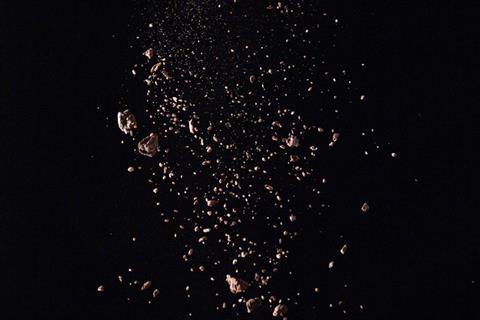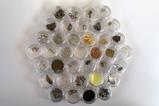An invitation to look differently

A recent invitation I received from the Museum of Contemporary Art (MCA) in Sydney prompted me to explore its artworks with a more focused frame of mind than usual.
As part of its public events programme, the MCA runs a ‘cross-disciplinary’ talk series to accompany different exhibitions. Visitors can ‘hear experts from a range of different fields share their perspectives on key exhibition themes’. I have been invited to share my perspective as a chemist on the museum’s mid-career survey of works by the Australian artist Nicholas Mangan. And so I challenged myself to explore Mangan’s work with a chemical mindset as I popped down to the gallery one weekend in late April.
I love experiencing art: it elicits a range of emotions and challenges me to think differently. Of course, part of the perspective I bring to any experience is clearly influenced by more than two decades of studying chemistry, but it was fascinating to focus in on Mangan’s ‘A World Undone’ with a different type of concentration and a defined agenda.
Material worlds
I applied my focus prior to entering the gallery, which sits resplendent on Sydney Harbour just opposite the Opera House. I noted the materiality of the building more consciously, appreciating the union of an adapted sandstone-clad 1950s structure with the modern, purpose-built extension where visitors enter.
The website accompanying the exhibition carries the tagline ‘sculpture without limits’ and refers to Mangan’s description of his artistic practice as a type of ‘material storytelling’. I enter the exhibition space with materiality in mind on an initial wander around the exhibits, before retracing my steps to look more closely and read the accompanying text.
I am first greeted by coffee tables that seem to almost glow white, each made from ancient coral rock from the island country of Nauru (Nauru – Notes from a Cretaceous World). In Limits to Growth, I encounter sculpture that ‘takes cryptocurrency as its point of departure’, with back-to-back representations of different forms of currency. The first, neatly stacked aluminium ingots reminiscent of gold bars and the second, a large papier-mache version of an ancient stone currency called Rai, from the Pacific island of Yap. On my second lap, I learn that both are made from reclaimed materials – the ingots from metals extracted from computers set up by the artist to mine bitcoin, and the Rai from shredded photographs of the stone currency whose reproduction was funded by profits from the bitcoin mine.
In Termite Economies, I experience 3D-printed structures made from polymer powders, which look like stuctures that have been built by termites from natural materials and relocated to the gallery. That is until I get up close and personal and can see that the material looks more like brown plastic than a mixture of soil, saliva and dung.
There are many other exhibits, but the one I’ve thought about most is the titular artwork A World Undone. I shuffle nervously into just about the darkest room I’ve ever entered, tracing my hand along the wall for security. A silent film is projected onto the opposite wall, showing particles of dust falling across a black backdrop.
I’ll admit even to feeling frightened
When I return to the light, I learn that the dust is made from samples of rock containing zircon, ‘the oldest known mineral on Earth’. The material, taken from rocks found on Watjarri Yamatji Country in Western Australia, has been dated at approximately 4.4 billion years old. Crushed into tiny particles by Mangan and filmed while falling, the particles were later collected and are now displayed between two pieces of glass in a form reminiscent of an illustrative volcano cross-section from a natural history museum.
The darkness hit me first and took a while to shake off. I’ll admit even to feeling frightened, as though I might fall into the emptiness of the room. But I think this feeling emphasised the almost incomprehensible age of the material and our proximity to it as visitors to the gallery.
I left with lots of ideas for my upcoming talk, but also thinking about how undergraduates or high school students might experience the exhibition from a chemical mindset. Once again I was reminded of the rich potential for art-based entry points into science, and indeed science-based entry points into art.

















No comments yet